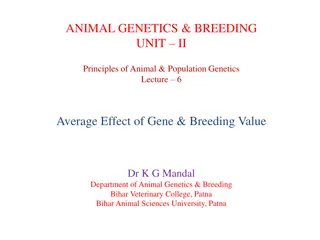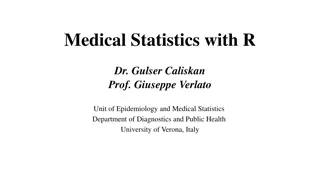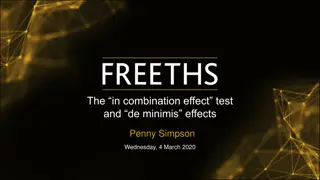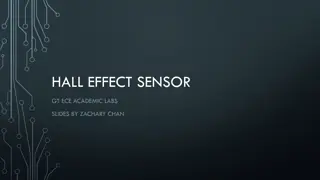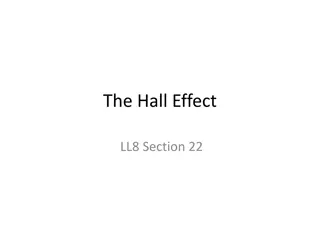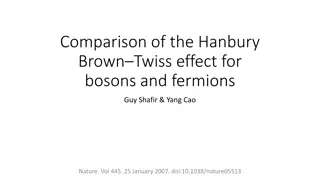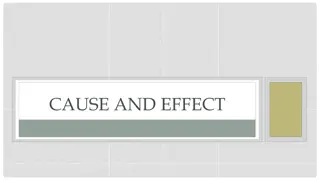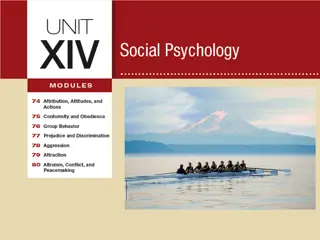
Impact of Electrical Stimulation on Various Systems for Health Improvement
Discover the beneficial effects of electrical stimulation on different body systems, such as muscle relaxation, nerve analgesia, and bone growth. Explore how Functional Electrical Stimulation (FES), Neuromuscular Electrical Stimulation (NMES), Interferential Therapy (IFT), Dorsal Root Ganglion (DRG) Stimulation, and Free Hand System contribute to enhancing health outcomes and improving quality of life.
Download Presentation

Please find below an Image/Link to download the presentation.
The content on the website is provided AS IS for your information and personal use only. It may not be sold, licensed, or shared on other websites without obtaining consent from the author. If you encounter any issues during the download, it is possible that the publisher has removed the file from their server.
You are allowed to download the files provided on this website for personal or commercial use, subject to the condition that they are used lawfully. All files are the property of their respective owners.
The content on the website is provided AS IS for your information and personal use only. It may not be sold, licensed, or shared on other websites without obtaining consent from the author.
E N D
Presentation Transcript
Effect of electrical stimulation on various system Aakanksha Bajpai Assistant Professor School of Health Sciences
Introduction- Electrical stimulation is one of the oldest & most effective modalities used in physical therapy. The stimulation of tissue for therapeutic purpose. These tissue may be a muscle to relax or contract, a nerve to produce analgesia & a bone to enhance growth.
Functional Electrical Stimulation- FES intervention is to enable functional movement by replacing or assisting with a person s voluntary muscle activation. FES can enhance motor learning and increase central nervous system (CNS) plasticity. FES promotes bone re-mineralization and prevents or reverses muscle atrophy. FES as a modality of treatment of MS, & FES will improve health outcomes in individuals with gait disorders.
Neuromuscular Electrical Stimulation- To improve wrist and finger function and prevent or correct shoulder subluxation in persons with partial paralysis following stroke. NMES resulted in meaningful clinical outcomes (e.g., decrease pain, functional improvement, improvement in quality of life (QOL) and ability to carry out activities of daily living (ADLs). NMES involves the use of Transcutaneous application of electrical currents to cause muscle contractions. It promote reinnervation to prevent or related disuse atrophy, to relax muscle spasm & to promote voluntary control of muscle.
Interferential Therapy- IFT reduces the pain or promotes healing of bone fractures, musculoskeletal or nonsurgical soft tissue injuries. IFT is the superficial application of a medium frequency alternating current modulated to produce low frequency. Increase blood flow to tissue & provide pain relief & is considered more comfortable for patient than TENS. Pulsed Electrical Stimulation- PES to facilitate bone formation cartilage repair & alter inflammatory cell function.
Dorsal Root Ganglion (DRG) Stimulation- DRG stimulation will improve health outcomes in patient with pain. DRG stimulation therapy may be prescribed for pain that is limited to a specific area of the body that starts in a lower part of the body (foot, knee, hip & groin). Sensory nerves that transmit information to the brain via the spinal column.
Free Hand System (Neuro-Control) The Bionic Glove: An electrical stimulator garment that provides controlled grasp & hand opening in quadriplegia- FES stimulate the NMJ, neuron is stimulate first (less charge needed). Phrenic nerve stimulation restore respiration ventilation.
Wound healing- (Bioelectric system) This system influences wound healing by attracting the cells repair, changing cell membrane permeability, enhancing cellular secretion through cell membranes. Healing of the injured tissue is arrested or will be incomplete if these current no longer flow while the wound is open. A moist wound environment is required for the bioelectric system to function. A natural current of injury & will jump start or accelerate the wound healing process.
Inflammatory phase- Initiates the wound repair process by its effect on the current of injury. Increased blood flow. Promotes phagocytosis. Enhances tissue oxygenation. Reduce edema. Attract & stimulate fibroblasts & epithelial cells. Stimulate DNA synthesis. Control infections.
Proliferation phase- Stimulates fibroblasts & epithelial cells. Stimulate DNA & protein synthesis. Increase ATP generation. Improves membrane transport. Produce better collagen matrix organization. Stimulate wound contraction. Epithelialzation phase- Stimulates epidermal cell reproduction & migration. Produce a smoother, thinner scar.






